Intro
Interpret Tb Skin Test Results with our comprehensive guide, covering positive, negative, and borderline readings, as well as tuberculin skin test procedures, TB diagnosis, and treatment options for latent tuberculosis infection.
The TB skin test, also known as the Mantoux test, is a widely used method to diagnose tuberculosis (TB) infection. It involves injecting a small amount of tuberculin into the skin, and after 48-72 hours, a healthcare professional reads the results. Understanding the results of a TB skin test is crucial to determine if an individual has been infected with TB. In this article, we will delve into the world of TB skin test results, exploring what they mean, how they are interpreted, and what steps to take after receiving the results.
The importance of TB skin test results cannot be overstated. TB is a serious infectious disease that affects millions of people worldwide, and early detection is key to preventing its spread. The skin test is a simple, yet effective way to identify individuals who have been exposed to TB, allowing for prompt treatment and prevention of further complications. Moreover, TB skin test results are essential for healthcare workers, individuals who have been in close contact with someone with TB, and people who have traveled to areas with high TB prevalence.
The process of interpreting TB skin test results may seem complex, but it is relatively straightforward. The test measures the body's immune response to the tuberculin injection, which causes a reaction in the skin. The reaction is usually indicated by a raised, firm area at the injection site, known as induration. The size of the induration is measured in millimeters, and the results are classified into different categories based on the size of the reaction. To better understand the results, it is essential to consult a healthcare professional who can provide guidance on the next steps to take.
Understanding TB Skin Test Results
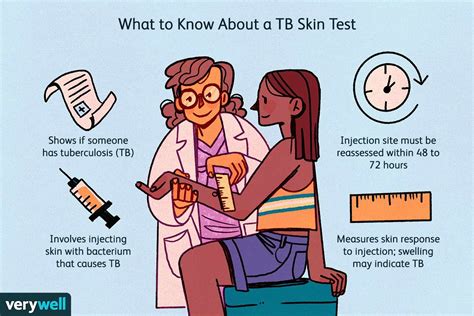
TB skin test results are typically classified into three categories: negative, positive, and borderline. A negative result indicates that the individual has not been infected with TB, while a positive result suggests that they have been exposed to the bacteria. A borderline result is inconclusive and may require further testing to determine the presence of TB infection. The size of the induration is crucial in determining the result, with larger reactions usually indicating a positive result.
Interpreting TB Skin Test Results
The interpretation of TB skin test results depends on various factors, including the individual's medical history, risk factors, and the size of the induration. In general, a reaction of 0-4 mm is considered negative, 5-9 mm is considered borderline, and 10 mm or more is considered positive. However, these values may vary depending on the individual's circumstances. For example, a reaction of 5 mm or more may be considered positive in individuals with HIV/AIDS or those who have been in close contact with someone with TB.TB Skin Test Results in Different Populations
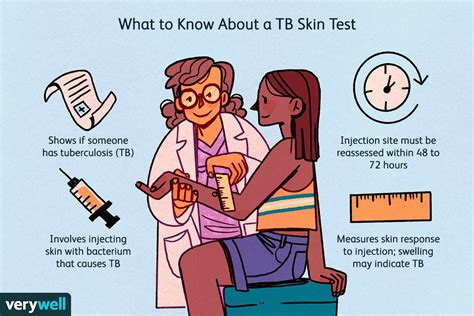
TB skin test results can vary in different populations, and it is essential to consider these factors when interpreting the results. For example, individuals with compromised immune systems, such as those with HIV/AIDS, may have a false-negative result due to their weakened immune response. On the other hand, individuals who have received the BCG vaccine may have a false-positive result due to the vaccine's effect on the immune system.
TB Skin Test Results in Healthcare Workers
Healthcare workers are at high risk of contracting TB due to their exposure to patients with the disease. TB skin test results are crucial in identifying healthcare workers who have been infected with TB, allowing for prompt treatment and prevention of further transmission. In healthcare workers, a reaction of 10 mm or more is usually considered positive, while a reaction of 5-9 mm may be considered positive in those who have been in close contact with someone with TB.What to Do After Receiving TB Skin Test Results
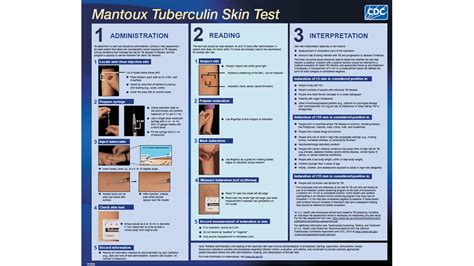
After receiving TB skin test results, it is essential to follow up with a healthcare professional to discuss the next steps. If the result is positive, the individual may need to undergo further testing, such as a chest X-ray or sputum test, to confirm the presence of TB infection. If the result is negative, the individual may need to undergo repeat testing to ensure that they have not been infected with TB.
Chest X-Ray and Sputum Test
A chest X-ray and sputum test are usually performed to confirm the presence of TB infection. A chest X-ray can help identify any abnormalities in the lungs, while a sputum test can detect the presence of TB bacteria in the sputum. These tests are essential in diagnosing TB and guiding treatment.Treatment and Prevention of TB
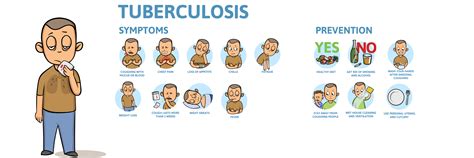
Treatment and prevention of TB are crucial in controlling the spread of the disease. TB treatment usually involves a combination of antibiotics, which must be taken for at least six months to ensure that the infection is fully cleared. Prevention measures, such as wearing masks and practicing good hygiene, can help reduce the risk of transmission.
BCG Vaccine and TB Prevention
The BCG vaccine is a widely used vaccine that can help prevent TB. The vaccine is usually administered to children in countries with high TB prevalence, and it can provide lifelong protection against TB. However, the vaccine is not 100% effective, and booster shots may be necessary to maintain immunity.Common Questions About TB Skin Test Results
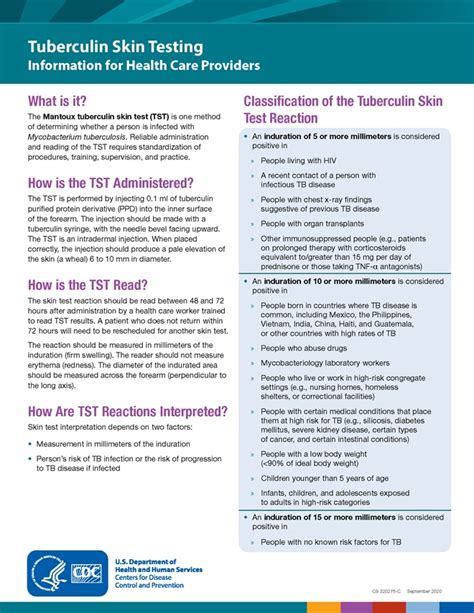
There are many common questions about TB skin test results, and it is essential to address these concerns. Some of the most frequently asked questions include: What does a positive TB skin test result mean? What is the difference between a positive and negative result? How long does it take to get the results?
Addressing Concerns and Misconceptions
It is essential to address concerns and misconceptions about TB skin test results. Some individuals may be concerned about the accuracy of the test, while others may be worried about the implications of a positive result. A healthcare professional can provide guidance and reassurance, helping individuals understand the results and the next steps to take.What does a positive TB skin test result mean?
+A positive TB skin test result indicates that the individual has been infected with TB. However, it does not necessarily mean that they have active TB disease. Further testing, such as a chest X-ray or sputum test, is usually necessary to confirm the presence of TB infection.
What is the difference between a positive and negative result?
+A positive result indicates that the individual has been infected with TB, while a negative result indicates that they have not been infected. However, a negative result does not necessarily mean that the individual is immune to TB, and repeat testing may be necessary to ensure that they have not been infected.
How long does it take to get the results?
+The results of a TB skin test are usually available within 48-72 hours after the test. However, the results may take longer to become available if further testing is necessary to confirm the presence of TB infection.
In conclusion, TB skin test results are a crucial tool in diagnosing and preventing TB. By understanding the results and taking prompt action, individuals can help control the spread of the disease and prevent further complications. If you have any questions or concerns about TB skin test results, do not hesitate to consult a healthcare professional. Share this article with your friends and family to raise awareness about the importance of TB skin test results, and take the first step towards a healthier, TB-free community.
